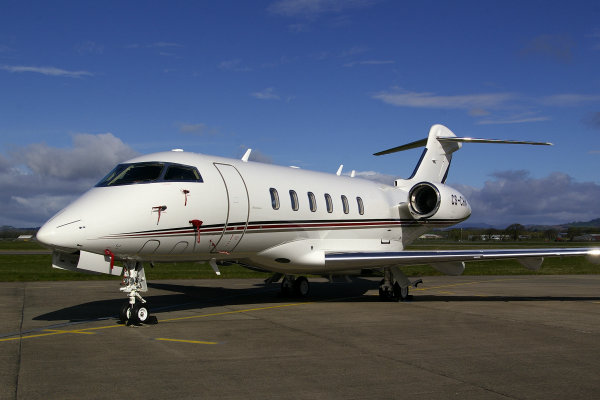Shipments of Bombardier business jets plunged by nearly a third in the first quarter of the year, due to falling demand for the airframer’s light, large and long-range business jets.
The Canadian airframer handed over 31 aircraft in the three months ending 31 March, with 14 Challenger 350s, 14 Global 5000/6000s, two Challenger 650s and a Learjet 70/75 making up the tally. This compares with 45 business jets shipped during the same period last year – 17 Globals, 14 Challenger 350s, nine Learjets and five Challenger 605/650s.
Continued strong demand for the super-midsize 350, however, resulted in strong first-quarter sales. Bombardier secured 40 net orders – up from 20 for the same period in 2015 – and ended the quarter with a business jet backlog valued at $17.3 billion.

Bombardier Aerospace (Challenger 350)
During its first-quarter earnings call on 29 April, Bombardier president and chief executive Alain Bellemare described the business aircraft market as “volatile”. The division recorded a 15% fall in revenues and profits during the first quarter, to $1.3 billion and $82 million, respectively, and is expected to end the year with 150 business jet deliveries: 49 fewer than in 2015.
Bellemare says Bombardier’s “proactive actions over the past 12 months”, notably “aligning our production rates to market conditions and executing on our new direct-to-customer strategy” has helped the company adapt to the “challenging” market conditions.
This approach, he argues, “has helped create value for our customers and [positioned] the company to better deliver long-term profitable growth”.
Continued investment in its in-development ultra-long-range duo, the Global 7000 and 8000, are a key part of this strategy. “We are very focused on executing the programmes we have,” Bellemere says, with "all hands on deck right now developing the 7000”.
While little has been revealed about the 7,900nm (14,600km)-range 8000 programme, Bombardier says it is “advancing” on systems integration and static testing of the flight test vehicles (FTVs) for its shorter-range stablemate.

Bombardier Aerospace
“All structural components have been joined on FTV1,” it says. “FTV2 and FTV3 are in final assembly with major structural components joined, including the rear, centre and forward fuselage sections, wing and cockpit. The final FTV is in various stages of production and assembly.”
A first flight timeframe is yet to be disclosed but Bombardier says the 7000 “is expected to enter into service in the second half of 2018”.
Source: Flight International
















